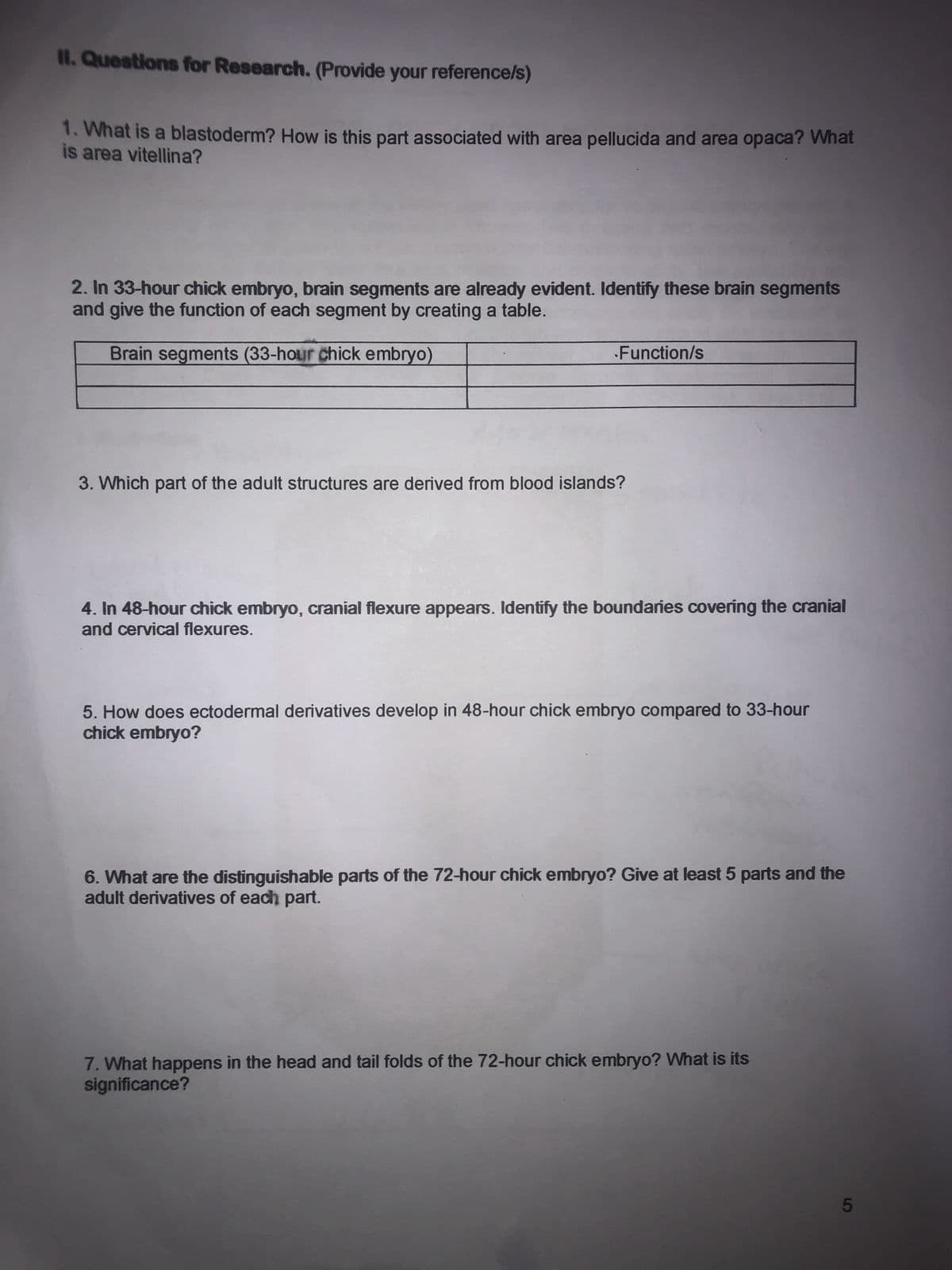Understanding Nutrition (MindTap Course List)
15th Edition
ISBN:9781337392693
Author:Eleanor Noss Whitney, Sharon Rady Rolfes
Publisher:Eleanor Noss Whitney, Sharon Rady Rolfes
Chapter16: Life Cycle Nutrition: Infancy, Childhood, And Adolescence
Section: Chapter Questions
Problem 1BCTQ
Related questions
Question
1.Where can we find the Circle of Willis in 10 mm pig embryo? What are the branches
associated with it?
.2. Dorsal aorta gives rise to several blood vessels. Name at least five arteries derived from
dorsal aorta and give their description/location.
with reference

Transcribed Image Text:II. Questions for Research. (Provide your reference/s)
1. What is a blastoderm? How is this part associated with area pellucida and area opaca? What
is area vitellina?
2. In 33-hour chick embryo, brain segments are already evident. Identify these brain segments
and give the function of each segment by creating a table.
Brain segments (33-hour chick embryo)
•Function/s
3. Which part of the adult structures are derived from blood islands?
4. In 48-hour chick embryo, cranial flexure appears. Identify the boundaries covering the cranial
and cervical flexures.
5. How does ectodermal derivatives develop in 48-hour chick embryo compared to 33-hour
chick embryo?
6. What are the distinguishable parts of the 72-hour chick embryo? Give at least 5 parts and the
adult derivatives of each part.
7. What happens in the head and tail folds of the 72-hour chick embryo? What is its
significance?
5
Expert Solution
This question has been solved!
Explore an expertly crafted, step-by-step solution for a thorough understanding of key concepts.
Step by step
Solved in 3 steps

Knowledge Booster
Learn more about
Need a deep-dive on the concept behind this application? Look no further. Learn more about this topic, biology and related others by exploring similar questions and additional content below.Recommended textbooks for you

Understanding Nutrition (MindTap Course List)
Health & Nutrition
ISBN:
9781337392693
Author:
Eleanor Noss Whitney, Sharon Rady Rolfes
Publisher:
Cengage Learning


Surgical Tech For Surgical Tech Pos Care
Health & Nutrition
ISBN:
9781337648868
Author:
Association
Publisher:
Cengage

Understanding Nutrition (MindTap Course List)
Health & Nutrition
ISBN:
9781337392693
Author:
Eleanor Noss Whitney, Sharon Rady Rolfes
Publisher:
Cengage Learning


Surgical Tech For Surgical Tech Pos Care
Health & Nutrition
ISBN:
9781337648868
Author:
Association
Publisher:
Cengage
